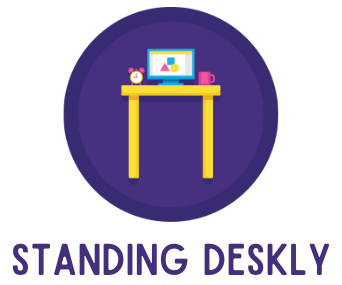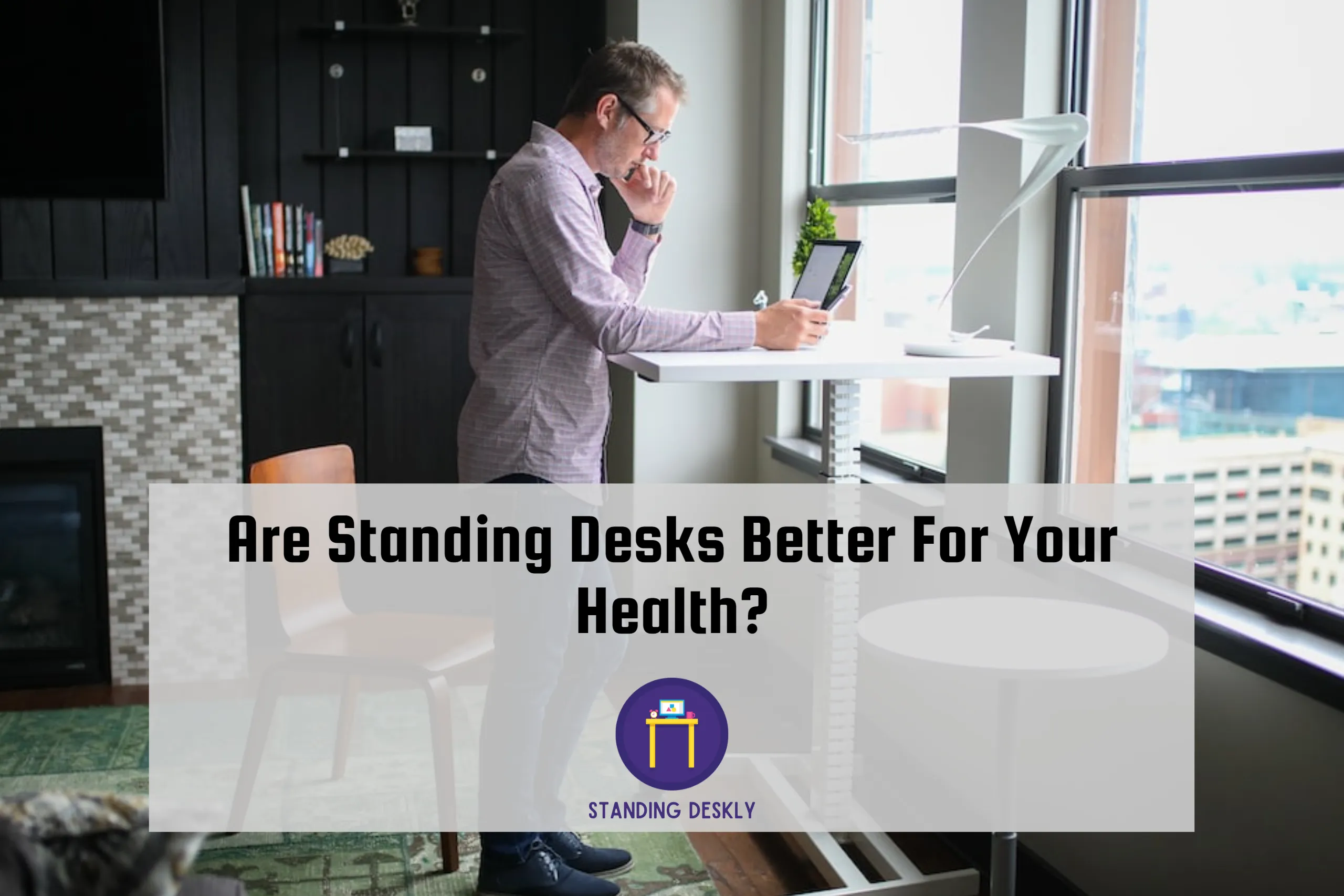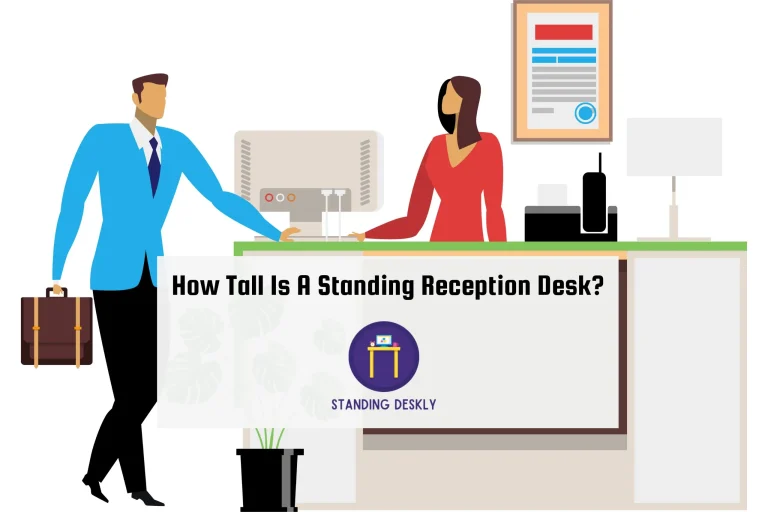Are Standing Desks Better For Your Health?
Many of us spend long hours working at a desk, whether it’s in an office or at home. We’ve all heard about the negative effects of sitting for extended periods of time, but have you ever considered switching to a standing desk? In recent years, standing desks have gained popularity as a healthier alternative to traditional seated desks. But are they really better for your health? In this post, we’ll examine the research on standing desks and their pros and cons to help you decide if they’re right for you.
Advantages of Standing Desks
There are numerous advantages to using a standing desk, which is why more and more people are making the switch. Standing up while working can reduce shoulder and back pain, boost your mood, improve focus, burn more calories and promote better circulation. Using a standing desk can improve your health, especially if you spend long hours sitting in front of a computer. Additionally, standing desks can ease lower back and shoulder/neck pain while potentially increasing productivity. While there are some drawbacks to using a standing desk, such as the potential for health problems if not used correctly, the benefits outweigh the risks. Overall, a standing desk can be a great addition to your workspace and help improve your overall health and wellbeing.
Benefits of Standing: Reduced Risk of Health Issues
By incorporating a standing desk into your daily routine, you can reap numerous health benefits. One of the biggest advantages is a reduced risk of health issues. Studies have shown that sitting for prolonged periods of time is linked to heart disease, diabetes, and even early death. However, when you stand more throughout the day, your blood sugar levels stay regulated, your cholesterol levels improve, and your risk of developing obesity decreases. Additionally, standing can help ease back and neck pain. Plus, regular bouts of standing and movement can boost your productivity, increase creativity, and lead to better problem-solving skills. While it may not result in significant weight loss, the overall benefits to your health surely outweigh any potential drawbacks. Consider making the switch to a standing desk to improve your overall well-being.
Standing desks can ease back pain
Standing desks have become increasingly popular in the workplace due to their ability to improve overall health and wellbeing. One of their most significant benefits is reducing back pain. Studies have shown that using a standing desk for several weeks can reduce lower back pain by up to 32%. Using a standing desk can help those with neck and shoulder pain by improving posture and reducing pressure on those areas. Incorporating a standing desk into your routine is an excellent way to ease any existing pain or prevent it altogether. Additionally, standing desks can increase productivity by keeping you alert and avoiding the slumps caused by sitting all day. While standing for extended periods can lead to its own set of health problems, the benefits of using a standing desk far outweigh the drawbacks. By using your standing desk correctly and taking regular breaks to move around, you could enjoy a pain-free workday and achieve optimal productivity.
Standing desks may increase productivity
If you’re looking for a way to boost your productivity at work, consider switching to a standing desk. Studies have shown that employees who use standing desks are more productive than those who use traditional desks. This is likely due to the fact that standing promotes better circulation and activity, which can help increase focus and reduce mental fatigue. Additionally, standing desks have been shown to ease back pain and other health issues associated with sitting for long periods of time. Although some worry that standing desks may have negative effects like health risks, the advantages of adding them to your schedule outweigh any downsides. So if you’re looking for a way to improve your work output and overall health, give a standing desk a try.
Burning extra calories at a standing desk is not worth health problems
While some may think a standing desk can aid in weight loss by burning extra calories, the reality is that the minimal calorie burn is outweighed by the potential health risks. Standing for three hours may burn an additional 24 calories, but it is not worth the risk of developing back pain or other issues associated with prolonged standing. Furthermore, standing for long periods of time can cause varicose veins and blood clots. Instead, incorporating movement and fidgeting while sitting can be more beneficial for burning calories and avoiding health problems. Remember, the goal is not just to burn calories but to prioritize your overall health and well-being.
Standing desks can ease lower back and shoulder/neck pain
If you suffer from lower back or shoulder/neck pain, using a standing desk may be a smart move for you. According to multiple studies, standing desks can ease these types of pain, especially when used consistently over time. Although standing desks aren’t a panacea, they can help soothe discomfort and offer meaningful respite to those contending with routine pain. One reason for this is that standing promotes better circulation, which can help loosen stiff muscles and joints. So, incorporating a standing desk into your routine may be a great way to improve your health, energy, and productivity. Just remember that combining standing with other healthy habits, such as regular exercise and stretching, is crucial for achieving the best results. Ultimately, the benefits of a standing desk outweigh the potential drawbacks, making it an excellent investment in your overall health and longevity.
Incorporating standing desks into routine is great for health
Now that we’ve discussed the advantages of using a standing desk, let’s talk about incorporating it into your daily routine. Making a standing desk a part of your workday can be a great way to boost your health. When you stand instead of sit, you increase your activity level and promote better circulation, which can lead to improved heart health and reduced risk of health issues associated with prolonged sitting. Additionally, standing can help ease lower back pain and improve posture. You may even find that standing increases your productivity and focus. While it may take a little getting used to, the benefits of using a standing desk certainly outweigh any minor drawbacks. So why not give it a try and see how it can benefit your health?
Standing promotes better circulation and activity
By incorporating a standing desk into your routine, you can promote better circulation and activity throughout the day. Studies have shown that standing and moving more throughout the day positively impact your health, and using a standing desk is a great way to achieve this. By standing, you stimulate muscles that may otherwise be inactive while sitting, leading to improved circulation and increased energy levels. This, in turn, lowers the risk of health issues such as diabetes and obesity. Additionally, standing desks can ease back, neck, and shoulder pain commonly caused by sitting for long periods. While it may take some getting used to, the benefits of standing desks far outweigh any initial drawbacks. So, consider incorporating a standing desk into your routine to promote better circulation and activity and improve your overall health.
Conclusion: Benefits Outweigh the Drawbacks
After exploring the advantages of standing desks, it is clear that the benefits outweigh the drawbacks. Incorporating a standing desk into your daily routine can improve your posture, reduce the risk of obesity, and ease back pain. You may also experience increased productivity and better circulation. Standing all day may not be necessary or recommended, but alternating between sitting and standing can positively impact your health. Although one must be cautious of the health hazards that come with prolonged standing, investing in a standing desk is worthy since it provides several benefits, which contribute to overall wellbeing.
Resource Links
https://www.chairoffice.co.uk/blog/8-incredible-benefits-of-standing-desks/
https://health.clevelandclinic.org/will-standing-work-improve-health/
https://www.btod.com/blog/health-benefits-standing-desk/
https://www.webmd.com/fitness-exercise/standing-desks-help-beat-inactivity
https://www.ohow.com/2021/02/08/standing-desk-ergonomics-7-benefits-of-standing-at-work/
https://www.health.harvard.edu/blog/the-truth-behind-standing-desks-2016092310264
https://www.autonomous.ai/ourblog/9-true-health-benefits-of-a-standing-desk

I’m the author and developer of Standingdeskly, the go-to site for standing desk enthusiasts. I provide comprehensive reviews of standing desks along with office setup tips. Combining years of research and personal experience, our goal is to make it easy for you to find the perfect standing desk tailored to your needs.







